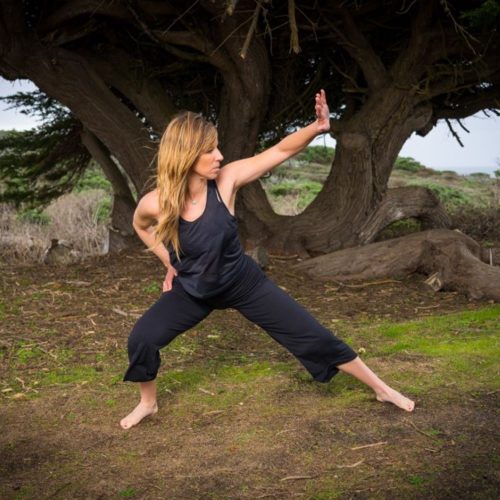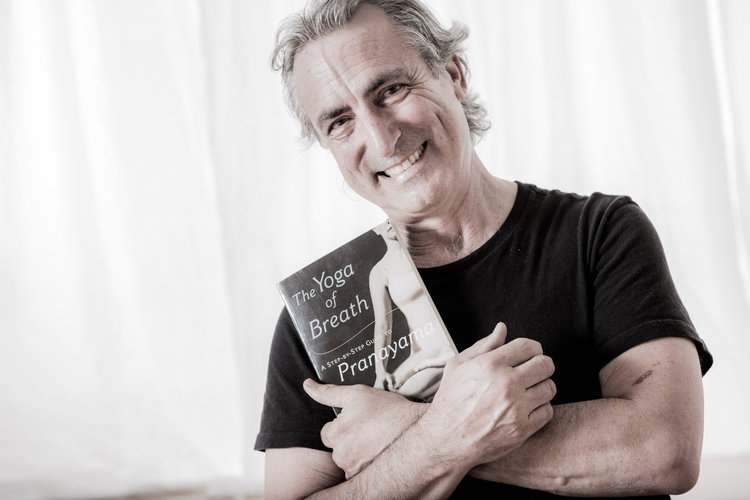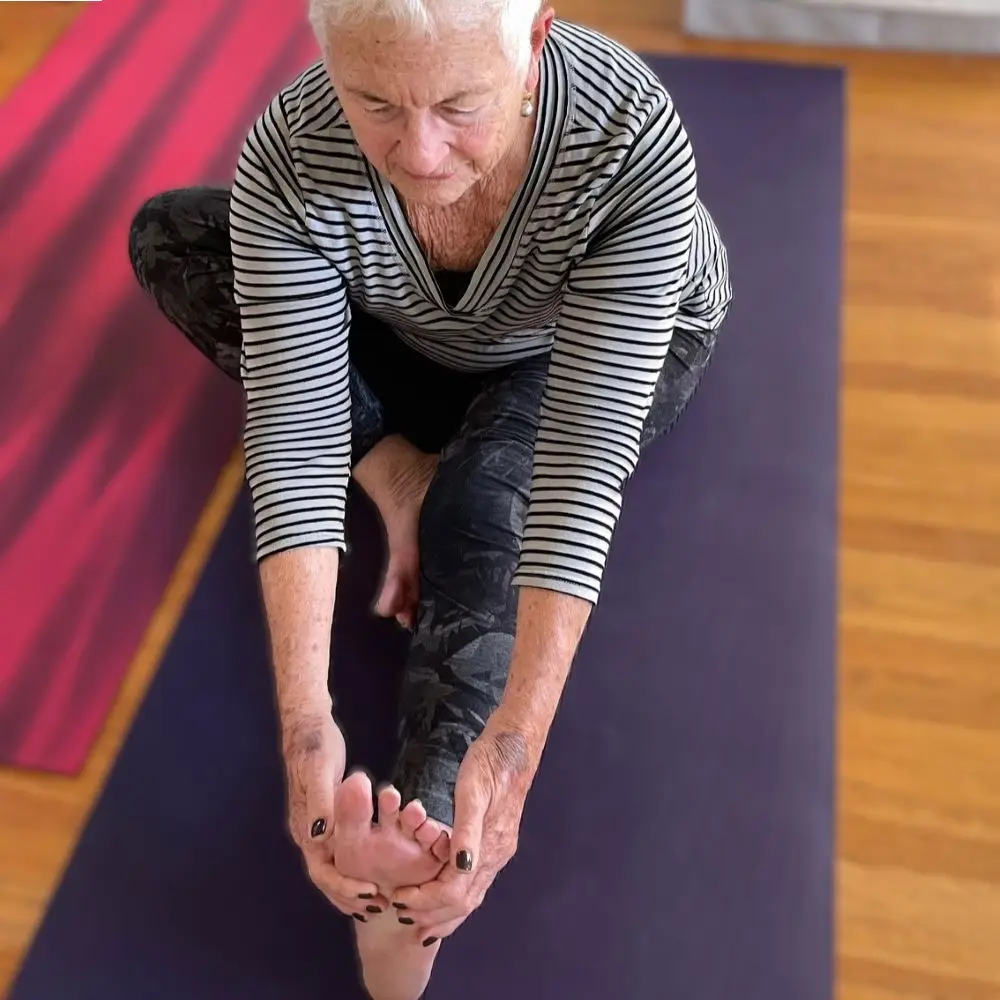Most of us take up the practice of Tai Chi or Qigong with the intention of making a change. The goal may be to gain physical mobility, or perhaps reduce stress and calm the mind. Regardless of your initial intention, the main objective of any qigong practice is to deepen your relationship with yourself kinesthetically, emotionally, mentally, and spiritually.
PHYSICAL EMBODIMENT
The embodiment of this practice is achieved through a deep awareness of our structural alignment and movement patterns. Through mindful movements, we slow down the body and breathe and rebalance the nervous system. As we care for our physical body, the mind slows down and settles into the body and the energy begins to move down from the head to our center (lower dantian). Energy lives within the physical body and the qigong practice can be likened to
cleaning your house. Your body is the vessel in which you experience life. As you deepen your practice, you will notice your current state of mind and body transform as you clear out old habitual patterns and make room for new energy.
EXPERIENCE
Experience is the foundation for how we maneuver through this world. If you don’t want to recreate the same experiences you’ve had in the past, you must practice something different! Qigong acts as the catalyst to shift old patterns. It is not a goal-driven practice. You will rarely reach a goal in qigong; instead, every time you go deeper, it seems to open a new door. In qigong, there appear to be no ends, just new beginnings.
ADAPTATION
Developing a new habit requires adaptation. Adaptation involves both experience and consistent practice, which demand trust, faith, and often lots of time and patience. Studies maintain that creating a new habit can take anywhere between 20-100 days depending on the individual. Establishing a new habitual pattern takes consistency, repetition, and an open mind.
NEUROPLASTICITY
If we practice a movement repetitively, our body adapts and takes that shape. Likewise, if we think a thought over and over, that thought begins to take shape. Just as we know our body can adapt to new stimuli, neuroplasticity demonstrates we can change the pathways in our brain to release old habitual patterns. To achieve this, we must open our minds and imaginations, while choosing to experience something different.
CONSISTENCY
One of the most important parts of any new practice is consistency. Consistency is a requirement for optimal adaptation. If you put in 20% effort, the universe will give you 20% back. If you put in 80% you will receive 80% back. “What you give is what you receive,” Master Mingtong Gu.
It’s important to create a consistent time of day and place to practice. Clear your space of distraction and decide whether to practice in the morning or evening. Set a reasonable intention of how many days a week you will practice. When I began my qigong practice, I practiced the same routine daily for one year. I practiced a variety of other routines daily for another two years to obtain my three-year medical qigong certification. I continue to teach four days a week with most of you, as well as maintaining my qigong practice every evening. Staying consistent has had profound benefits and helped me shift many old physical as well as mental and emotional patterns.
SELF-RESPONSIBILITY
Although qigong is a physical practice, it’s not a stand-alone practice. You are still responsible for eating well, hydrating, sleeping well, developing positive relationships, getting adequate sunlight, being physical, and reducing prolonged mental and emotional stress. However, you may find that through the qigong practice, self-care becomes easier to accomplish.
FLOW
As you practice consistently, you should find you’re able to move through life’s transitions with more ease and flow. You will begin to trust in the direction life leads you, as well as the direction you choose to lead life. This new frame of reference will allow you to connect more deeply within, while simultaneously enabling you to form deeper connections with others. You may find over time you are more able to relax your expectations of what “should be,” and learn to accept what “is.” As you begin to let go of resistance, there’s an opening to the infinite potential available to you. As you embrace a deeper connection to the present, worry and anxiety slip away and an inner serenity begins to take shape.
INTENTION
To create new patterns whether physical or mental, you must first set a clear intention. Understand that this is not an expectation, but an intention. When you intend something, it may not present itself in the way you expect, hence the importance of letting go of expectations. Go beyond your stories, goals, beliefs and what’s familiar to you. If your life is not working or has not worked to this point, try something new and different! Learn to connect beyond the “self’ you’ve created with your past conditioning. Create the “self” you choose to be rather than letting the past choose for you. Open your imagination and allow the practice to help you manifest your creative energy. Trust the process and have faith that life is on your side. As we let go of old conditioning, we empower ourselves and energetically repattern.
ENJOYMENT
Be sure to enjoy your practice. It should not be something you have to do but should be a relaxing trip inside to get to know and take care of yourself. Don’t look for perfection within yourself or your practice, but instead find perfection within all your so-called imperfections. Accept what is comfortable as well as what is uncomfortable. When you enjoy your practice no matter what is happening in life around you, know are on the right path.
ACCEPTANCE
Qigong recognizes that everything is made up of energy and energy always has the potential to change forms. Transformation occurs when we accept our past as well as our current life conditions regardless of whether they are difficult. When we accept all experiences, there is a deeper acceptance of self. Accepting our emotions and experiences at a cellular level is important, not only the outer experiences but also the inner emotions and reactions to our circumstances.
TRANSITIONS
Life is dynamic and full of transitions. Accepting these transitions is easiest when we let go of resistance and the need to control. Are you able to let go of stress and worry no matter what your circumstances? Remove the internal challenging obstacles even if you cannot remove the external ones. The activation of energy through the qigong practice takes on a life of its own as it creates new patterns of behavior. You may shift a relationship, situation, or way of being. This change can seem scary at first, but you never know what you will find until you take that first step. There is no shortcut here. As a Chinese proverb goes, “Each thousand-mile journey starts with one step.”
TRANSFORMATION
So, enjoy your practice with an open mind and begin to watch your life transform! I have so much gratitude for finding this practice. My life purpose is to experience it and share it with all of you. As we connect and practice together, we reconnect more deeply to ourselves simultaneously.















